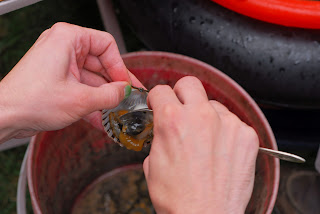I've been using Project Fi as my mobile carrier for a little over a year now and only recently found out that I can order additional data-only sims. There's no extra charge and they just use data from my plan as I go. I've been curious about the 3g/4g backup WAN option on the Zywall USG series (I'm using a USG 40) but the list of compatible modems is an image (really Zyxel?) an only lists brands and models with no useful carrier info. After dealing with support I also found out that this list does not apply to all USG models, the D-link DWM-157 which I tried first does not work with the USG 40, even though it does work with project Fi, at least with 2g access.
The data-only sims work with T-Mobile's network only, unlike the compatible phones which also use Sprint and US Cellular to round out the coverage map. I finally settled on the Huawei E397, also sold as as the Boltz modem for Cricket's service. This same setup should work with either Cricket or Ting for carriers if you don't have Fi. To order a data only sim, log in to your project fi page on a web browser (the option doesn't show up on the Android app) click on 'manage plan' and 'Add data-only SIM'
To make this all work, you'll need:
- Zywall USG series firewall
- Project Fi (or another compatible carrier's data sim)
- Huawei E397 Modem
- Sim card adapter (nano to full size)
- USB 2 extension cable (optional)
Install your Project Fi SIM in the adapter:
I ran into some issues with the adapters I purchased, occasionally the modem would report no sim card being installed. I fixed this by trimming off a small amount of the adapter card (on the notched end) so that the adapter could fit slightly further into the sim slot. I laid the adapter on top of an unmodified one to show how much material I removed, less than .5mm.
Install the adapted SIM in the modem and plug in to your computer (I tested this on both Mac and Windows, this modem has software for both)
Follow the instructions to install the dialer software and verify that you have service. You should eventually get a blue light on the modem when it finds the network, and the dialer will show T-Mobile service.
From here, disable your ethernet or wifi and click 'connect' verify that you can connect and access the internet.
Log in to the web interface on your Zywall, in configuration mode, under Network, Interface, click on the 'Cellular' tab.
Click 'add' to add a new Cellular interface
Configure the interface as follows:
Zone: WAN
Description: Project Fi
Nailed Up: Unchecked
Idle Timeout: 0 seconds
Profile Selection: Custom
APN: h2g2
Dial String: *99***1#
Authentication Type: None
Enable Connectivity Check: Checked
Either select 'check default gateway' or pick an external site to check connectivity against, such as Google's DNS server, 8.8.8.8.
Network Selection: Auto
Select the newly created interface and click "activate" then "Apply" at the bottom of the page. The status should change to Active (yellow light bulb)
Click "connect" to dial. You should see a counter for a few seconds and then the interface will show 'connected' (globe with purple link chain)
You now have a connection but traffic will not fail over to this link unless you set up a WAN trunk
Click "Add" under User Configuration to create a new trunk
Select Weighted Round Robin, and add wan1, mode: active, weight 5
add cellular1, mode: passive, weight 1
Setting the cellular link to passive ensures this link will only be used if wan1 is down.
Select "Disconnect Connections Before Failing Back" should stop traffic from going over the 4g link when the main wan comes back up.
Select "User Configured Trunk" and select the trunk you created.
Click "apply" and test your configuration.




















































